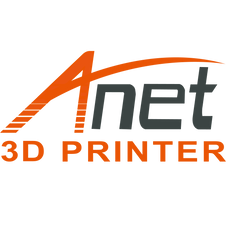The Advantages of PETG over ABS Filament
When it comes to 3D printing, what filament we take is another important factor that affects the result sometimes as much as the printer. For a long time, ABS has been a staple for its durability, heat-resistance, low cost and accessibility. But nowadays, things are changing since PETG printing advantages are gradually admitted.

A fixture for some electronics printed with PETG filament on Anet ET4, shared by Peter F. Jørgensen
What is PETG?
PETG is a merely variation of the PET (Polyethylene terephthalate), a well-known and widely used plastic in the world. Comparing to common PET, PETG is glycol-enhanced and makes it more flexible, less rigid but more heat and chemically stable.
Why is PETG challenging ABS in 3D printing?
1. PETG is Easier to Print
When choosing a filament to print an object, easy to print is always a factor that we must consider.
ABS is hard to stick to both itself and to the print bed. It tends to result in warping, deforming of the object and even cracks between layers.
But PETG adheres much better and prevents warping, deforming and cracks. It’s much easier for 3D printing.
2. PETG Has Lower Print Temperature Requirement
ABS filament needs both higher bed and nozzle temperature while printing.
But not all 3D printers can manage the extreme bed temperature requirement for printing ABS, which sometimes reaches over 100 ℃.
To print ABS, the hot end must be all metal but PTFE-lined ones can’t handle it.
Thus, PETG has lower requirement on both the print bed and the nozzle. It reduces your expense for 3D printing.
3. PETG Has Less toxic fumes
PETG has no styrene inside and emits minimal odor and less toxic fumes while printing. It’s friendlier to environment and a better choice for your health.
But ABS produces styrene gas, noxious fumes that can pollute environment and affect our health.
4. Lower glass transition temperature for PETG
Glass transition temperature is commonly described as the temperature at which 30–50 carbon chains start to move. At glass transition temperature, the material transforms from rigid state to more flexible and rubbery state.
PETG has a 70-80 ℃ glass transition temperature which is lower than the 105 ℃ of a ABS filament. It makes PETG a perfect material for printing stiff but resilient parts such as quadcopter bumpers. Get more detailed PETG print settings on our blog.

RC Model printed with PETG filament from Łukasz Wiszniewski
PETG printed bumper has both reasonable stiffness to resist impact and durability to absorb the force of crashes.
5. PETG Has Strong UV resistance
Comparing to ABS, PETG has a stronger UV resistance feature which allows us to make outdoor parts with a 3D printer. PETG object lasts longer under sunshine.
6. Nice Results on Print Transparent Object
PETG is unique in transparent colors and makes possible to print perfect lampshades for protecting lamp from rain but not weakening the light. Transparent PETG certainly brings your printed model a gorgeous looking among ABS printed models while they’re non-transparent.

Petg Transparent Filament Print Result. Credit to Thomas Sanladerer
In conclusion, more and more users are finding that PETG filament is much easier to print than ABS but has fewer requirements on a 3D printer’s components or performance. It offers much better features in preventing warping, enhancing layer adhesions, strength to absorb impact, transparent object printing, and etc. More importantly, PETG emits no toxic fumes. It’s much safer than ABS filament.

Leave a comment